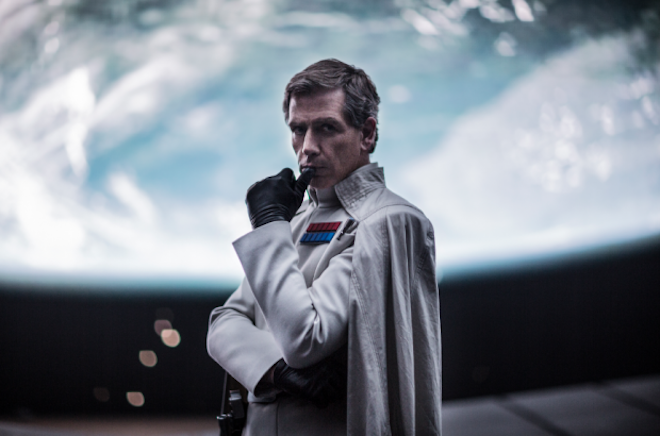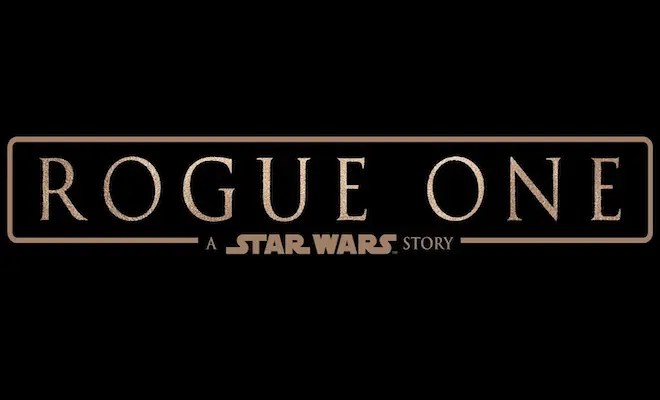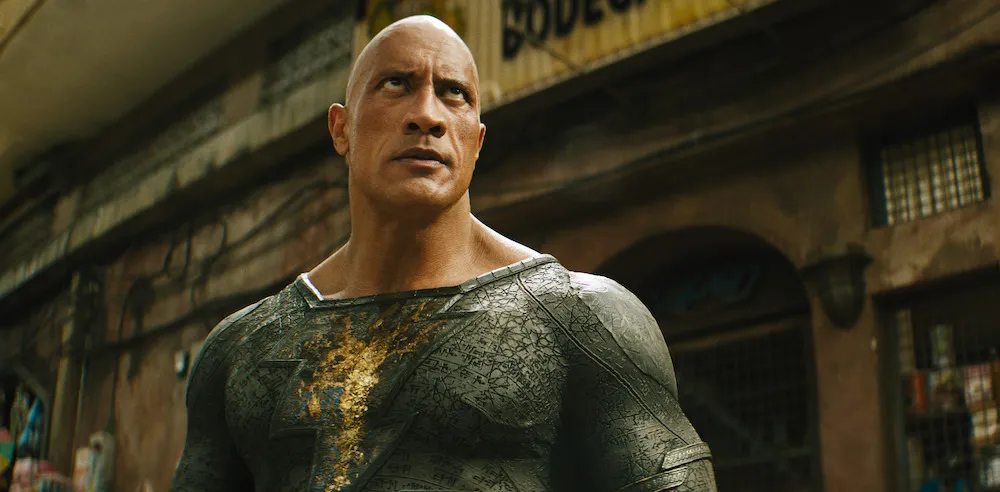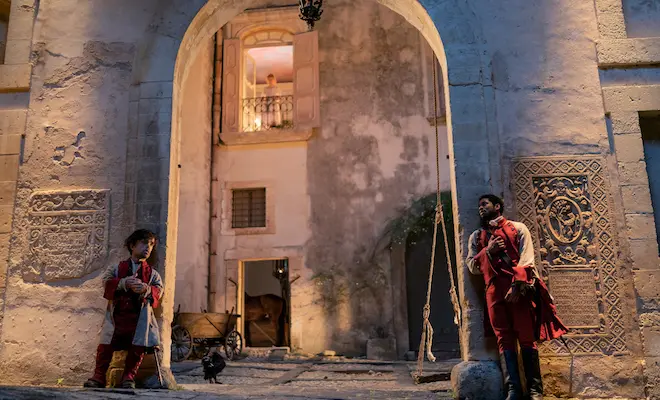There are many precedents at work in Rogue One: A Star Wars Story. It’s the first ever true stand-alone Star Wars film, one not tied to roman numerals, the Jedi, and the Skywalker family. It’s the first that doesn’t open with a crawl of any kind. And it’s also the first to not be scored by John Williams. Even without Skywalkers, wordy crawls, and the iconic fanfare, Rogue One still feels like a Star Wars film. And the intense action on-screen, coupled with some very interesting ties to the films that came before, makes this easily one of the best Star Wars films ever.
Rogue One: A Star Wars Story is essentially the story of how the rebel alliance got their hands on the Death Star plans, an event that opened the entire saga back in May of 1977 when Darth Vader’s Star Destroyer overtook Bail Organa’s Corellian Corvette in orbit above Tatooine. If you’ve ever wondered how Leia got the plans that she fed into R2-D2 with the mission to deliver them to General Kenobi, triggering the epic adventure we all know, this is that tale.
Rogue One — at its core — is the story of the Erso family, and how Galen Erso (Mads Mikkelsen), a genius inventor and expert in kyber crystals — the power source of a Jedi’s lightsaber — was forced by Imperial Science Director Orson Krennic (Ben Mendelsohn) to help build the ultimate weapon of destruction. Galen is taken by the empire, and his young daughter, Jyn (Beau Gadsdon), is forced to hide until she is discovered and raised by Saw Gerrera (Forest Whitaker) to resist the evil empire.
When we meet adult Jyn (Felicity Jones) 15 years later, she’s an imperial prisoner, who escapes when a rebel force tries to free someone else. By classic Star Wars happenstance, she is important — as Galen’s lost daughter — and reluctantly joins the fledgling alliance just as word of a secret planet-killing super weapon under imperial control becomes known. Jyn, along with Cassian Andor (Diego Luna), a rebel spy, the re-programmed imperial droid K-2SO (voiced by Alan Tudyk), and a blind mystic, and martial artist, who is also a fan of the Force, Chirrut Imwe (Donnie Yen) — and who also serves as a Protector of the Whills (which in itself is deeply embedded in old Star Wars lore), are thrust into the conflict between the rebellion and the empire, and the fate of the entire galaxy hangs in the balance.
Rogue One: A Star Wars Story pulls back the curtain on the many nuances and mysteries that have plagued the series for almost 40 years now. In fact, Rogue One does more to connect the narrative dots than all three of the prequel films combined — and that’s not an understatement. If you’ve ever watched the Original Trilogy and asked a “why” question, there’s a good chance it is answered in this film.
Director Gareth Edwards (Godzilla, Monsters) does an amazing job of offering fan service — even in the most unexpected places — all the while driving his own unique vision. Edwards has made a dirty, thrilling, and violent war movie here, with the same war movie cliches and blemishes that have plagued even the best films in this genre. It might seem derivative, but Rogue One: A Star Wars Story is essentially the Saving Private Ryan or the Bridge Over The River Kwai of the Star Wars franchise.
What J.J. Abrams did in last year’s Star Wars: The Force Awakens to reinvigorate the franchise, coupled with what Edwards does here only proves that Star Wars is best when other voices get to play in creator George Lucas’s universe. Kathleen Kennedy, the president of LucasFilm, has done an amazing job in steering this franchise into new waters, and the fact that we have a stand-alone film based off a strong script by Chris Weitz and Tony Gilroy, and a story by John Knoll and Gary Whitta, proves that the future of Star Wars is in perfect hands.
This is a whole movie based on one mission, and the rag tag group of misfits and soldiers who come together to pull off the biggest, most important mission in the entire Star Wars saga. If you think that’s hyperbole, just imagine what would have happened if there had been no way to take down the dreaded Death Star in Star Wars: Episode IV: A New Hope. The Rebel Alliance would have been wiped out, either on Yavin 4 or in skirmishes scattered across the galaxy, the senate would be dissolved by the emperor, and the rebellion would be finally squashed. So the stakes are high here, even if we all know the eventual outcome. As they say, it’s not the destination, it’s the journey, and in Rogue One: A Star Wars Story, that journey is utterly sublime.
Even though John Williams didn’t write the music for Rogue One, many of his most iconic compositions find their way into Academy Award-winner Michael Giacchino’s score. In fact, when the title card appears on screen at the beginning of the film, using the classic Star Wars font, the song being played made me feel like I was watching a fake Star Wars movie, one from a spoof by The Simpsons or Family Guy. It was Star Wars-like, but not really Star Wars. It just didn’t hit my ear right and it was distracting. With all due respect to Giacchino, who reportedly replaced the original composer in late summer, the Rogue One score, as a narrative piece of music, isn’t very memorable, feels rushed, and is one of the weakest aspects of the film as a whole.
It would be easy to spoil so many of the great things that Rogue One: A Star Wars Story does for the greater lore of the franchise, but I will hold back, save for one thing (and since he’s in the trailers and commercials, it’s not so much of a spoiler). If this still bothers you, skip the rest of this paragraph starting from this point, and you will be fine. If you are still here, know that we finally get to see Darth Vader be the badass we’ve been told about for nearly four decades. I’m not sure I took a breath during this extended scene, as Vader opened up and became a relentless killing machine with his ominous glowing red lightsaber and a complete mastery of the Force. The recent Marvel Comics version of Darth Vader did an amazing job of showing a villainous, evil Sith Lord, but here, Gareth Edwards has brought it to life, and it was well worth the wait.
Rogue One: A Star Wars Story does an amazing job of telling a complete stand-alone Star Wars story, yet it is still tied to the most important points of the Original Trilogy in some wonderfully unique ways. Neat cameos, some great — and funny — lines by the droid K-2SO, and the thrill of seeing things we’ve only heard about in passing, or briefly read about in novelizations, come to life makes this an important chapter of the Star Wars saga, even if it is just a one-and-done and lacks a roman numeral in its title.
If this is the level of storytelling that the stand-alone films will be bringing, I’m now incredibly excited for the young Han Solo film and the unnamed third (*ahem* Boba Fett *ahem*) stand-alone film yet to come. Until then, Episode VIII hits theaters next year, and Rogue One: A Star Wars Story serves as the perfect place holder for the stories still to be told.
Rogue One: A Star Wars Story is rated PG-13 and is in theaters on December 16, 2016, with early screenings on Thursday, December 15, at select locations.











